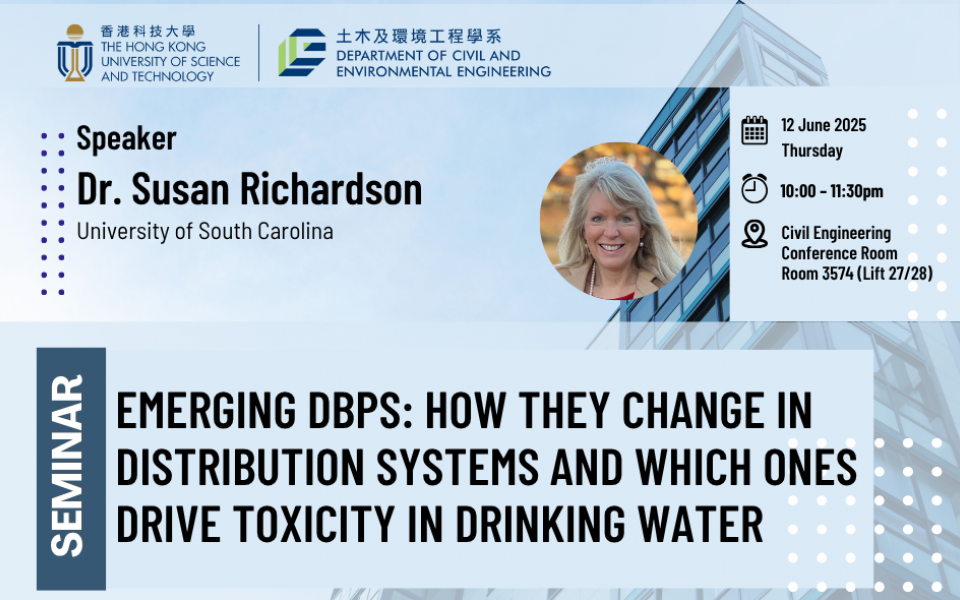Civil Engineering Departmental Seminar - Emerging DBPs: How They Change in Distribution Systems and Which Ones Drive Toxicity in Drinking Water
Supporting the below United Nations Sustainable Development Goals:支持以下聯合國可持續發展目標:支持以下联合国可持续发展目标:
Emerging DBPs: How They Change in Distribution Systems and Which Ones Drive Toxicity in Drinking Water
This presentation will discuss 4 recent studies involving drinking water disinfection by-products (DBPs). Part 1 will focus on how DBPs change in the distribution system over time, compared to the finished water that is collected at the drinking water treatment plant. For this, spatio-temporal trends of 66 DBPs across 9 different classes were examined in two drinking water distribution systems with similar source waters, but different pretreatments and residual disinfectants (chlorine and chloramine). Four routes were sampled for each system with six time points over three days travel time, collected at increasing distance from the treatment plant to “chase” the same packet of water. Results demonstrate that a person’s DBP exposure depends on where you live relative to the treatment plant. Part 2 will include results from a Forcing Factors study which combined analytical chemistry with cytotoxicity data to determine important DBP drivers of toxicity in U.S. drinking water. Part 3 will discuss the discovery of a new class of halocyclopentadiene DBPs that are the first class to be bioaccumulative, and for which one is now the most cytotoxic of all DBPs studied to-date. Part 4 will discuss impacts of wildfires on downstream drinking water impacts, how the ash organic matter can impact DBPs formed at downstream plants following the washing of ashes into water sources after heavy rain events.
Dr. Susan Richardson is the Arthur Sease Williams Professor of Chemistry at the University of South Carolina and was formerly at the U.S. EPA for many years. Her research surrounds the study of emerging contaminants in water. She is a member of the National Academy of Engineering (2024), Executive Editor and Associate Editor for Environmental Science & Technology, past President of the American Society for Mass Spectrometry (2020-2022), and received the American Chemical Society (ACS) Award for Creative Advancements in Environmental Science & Technology (2008), an Honorary Doctorate from Cape Breton University (2006), an AAAS Fellow (2019), an ACS Fellow (2016), the Herty Medal (2020), the Southern Chemist Award (2020), the Walter J. Weber, Jr. AEESP Frontier in Research Award (2021), and the Analytical Scientist Power List (2024, 2023, 2021, and 2019). Over her career, she has published 214 articles, given 395 invited presentations and seminars (including 78 plenaries/keynotes) and 198 contributed presentations. She has a Ph.D. in Chemistry from Emory University and a B.S. in Chemistry & Mathematics from Georgia College & State University.
